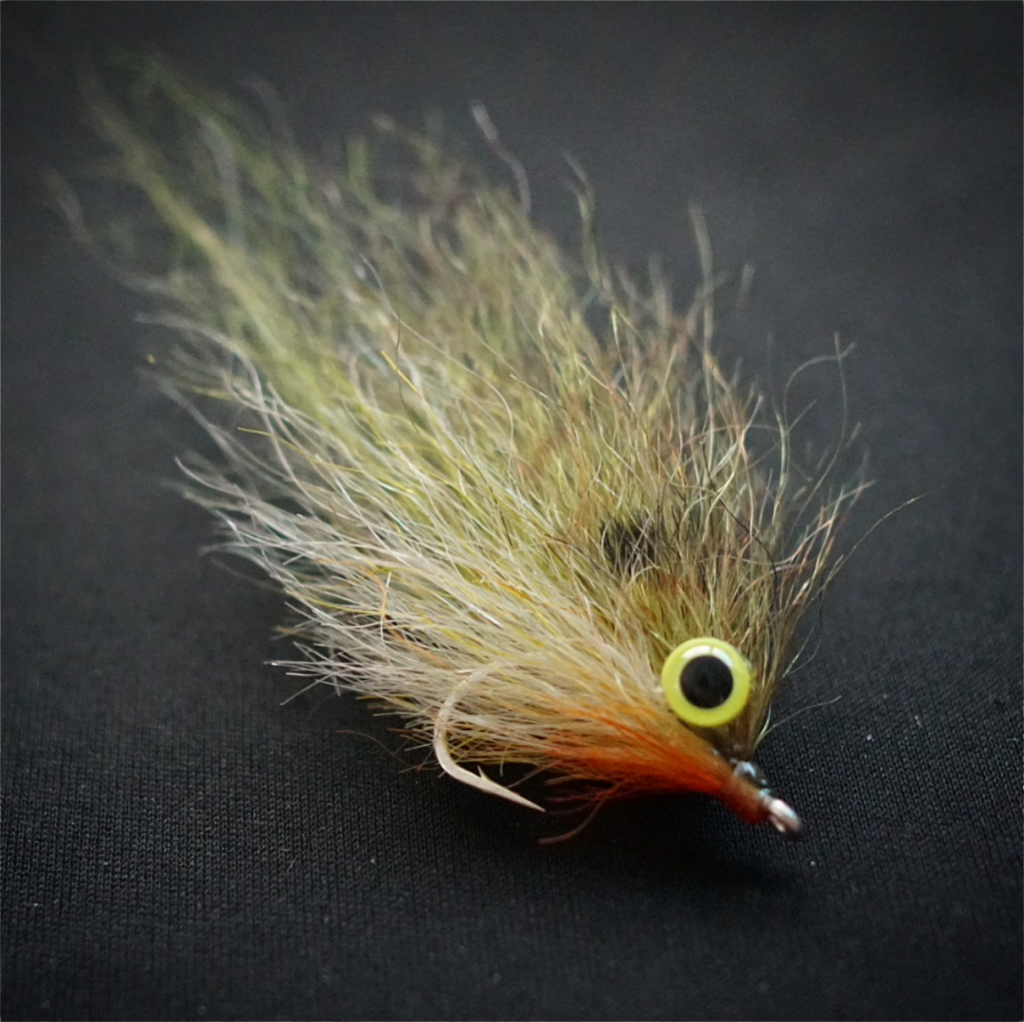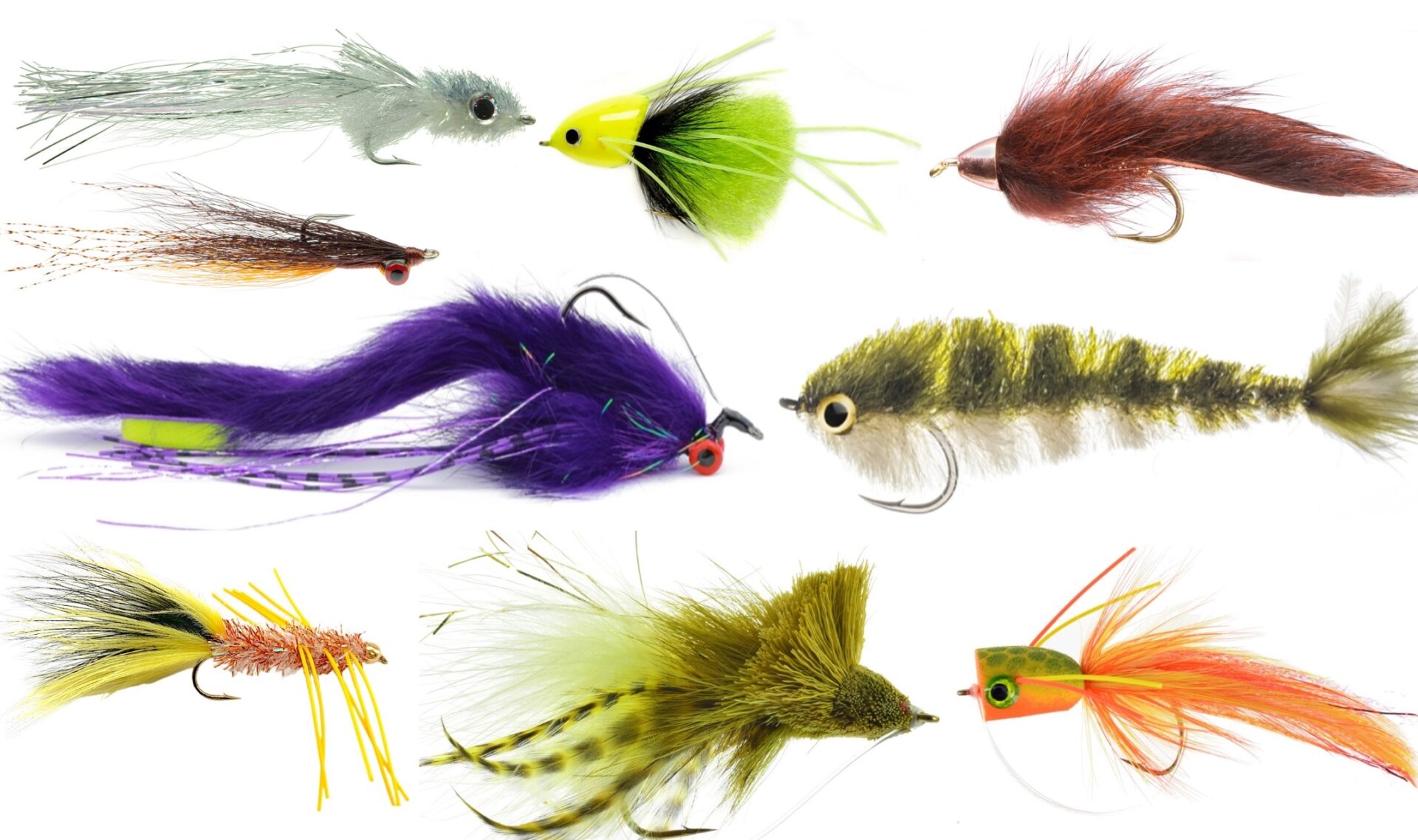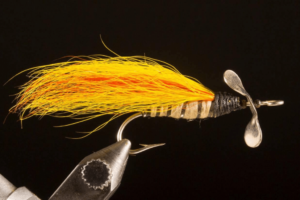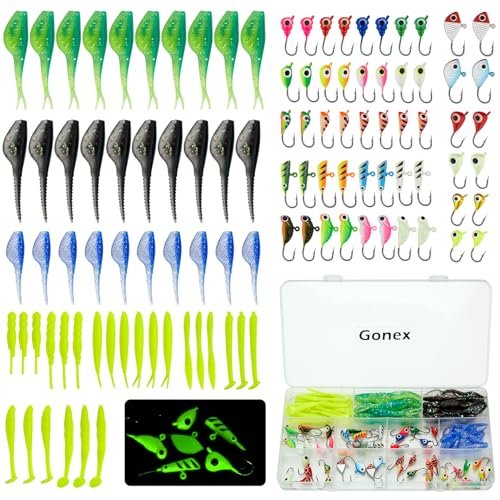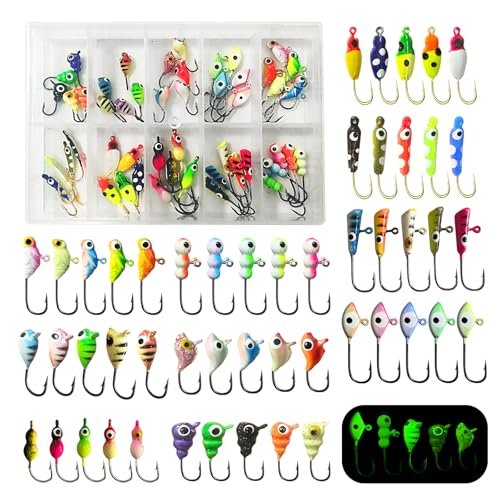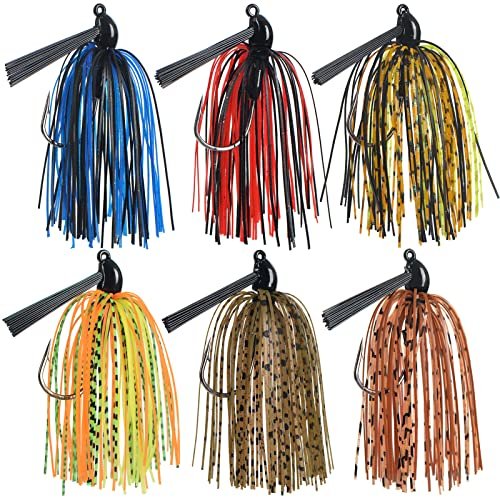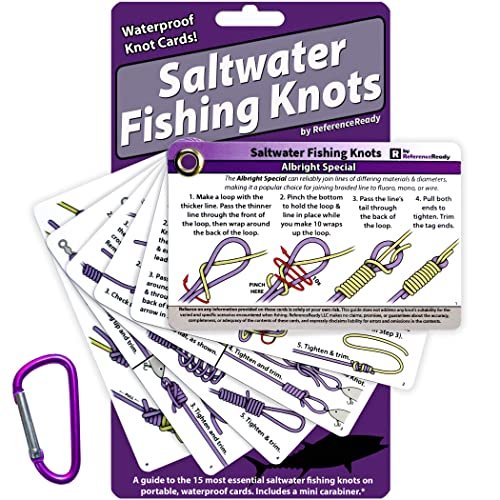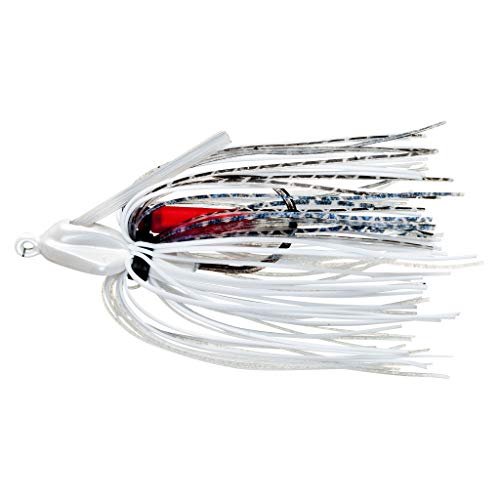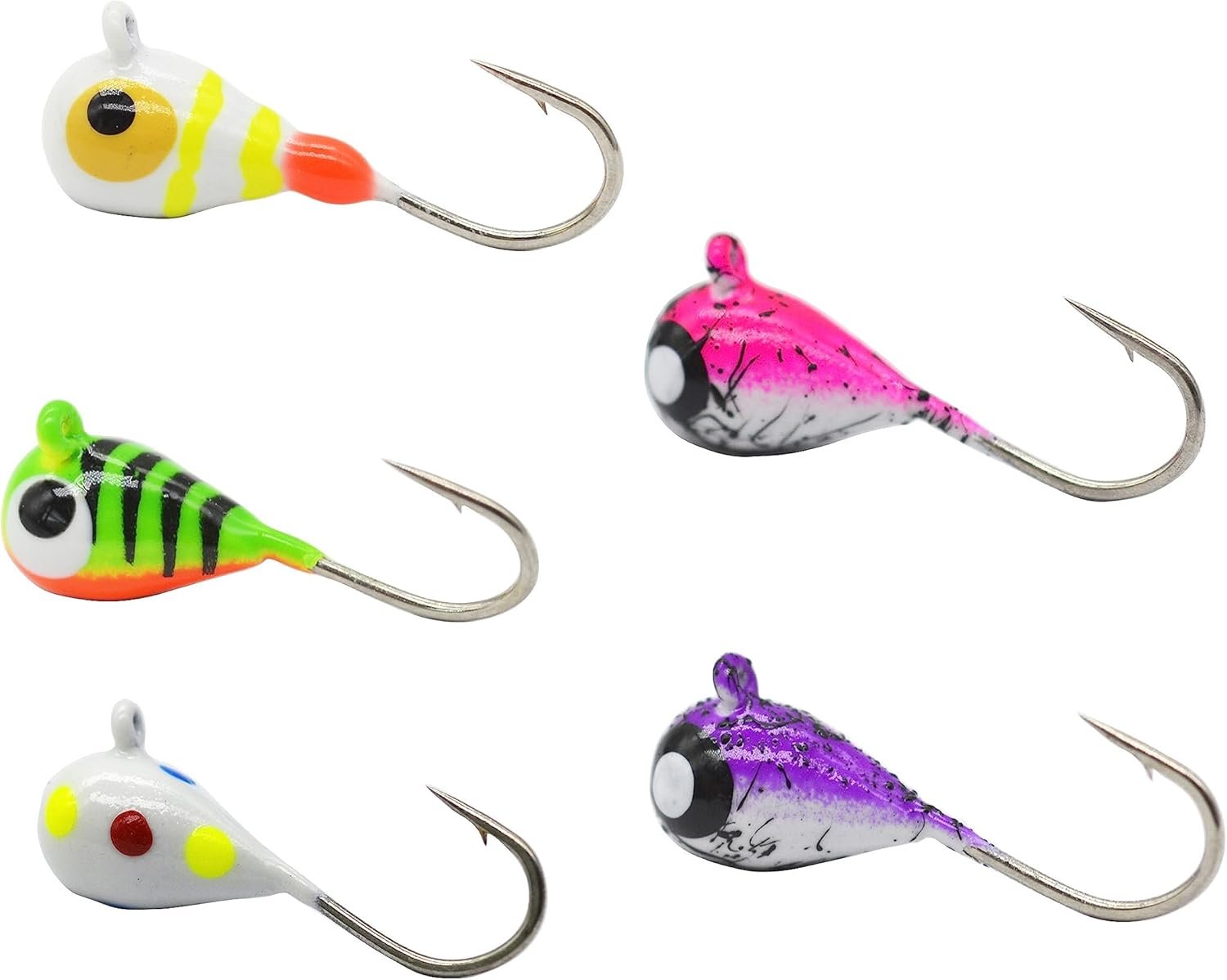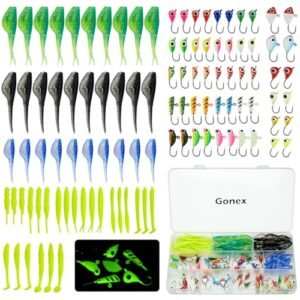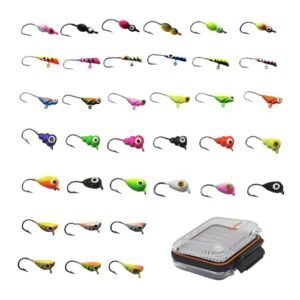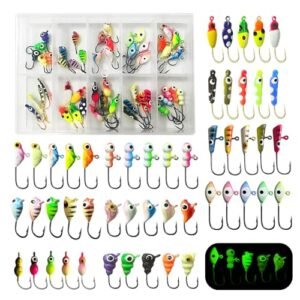Bass flies come in various shapes, sizes, and colours to mimic the natural food sources of bass. These artificial lures often resemble insects, small fish, or crustaceans. Anglers use them to attract and catch bass in both freshwater and saltwater environments.
The right selection of bass flies can significantly enhance your fishing success. Different patterns and techniques can help you match the local prey and conditions. Choosing the appropriate fly for the situation is crucial. Bass flies are a versatile and effective tool for any serious bass angler.

Introduction To Bass Fly Fishing
Bass fly fishing is an exciting and rewarding hobby. It combines the thrill of the catch with the serenity of nature. Fly fishing for bass is different from other types of fishing. It requires unique techniques and specialized gear. This guide will introduce you to the basics of bass fly fishing.
Popularity And Thrill
Bass fly fishing is popular among anglers for several reasons. Bass are known for their strength and fight, making each catch thrilling. Many anglers find bass fishing exciting and challenging. The anticipation of a bass striking your fly is exhilarating. Bass are found in lakes, rivers, and ponds across many regions. This makes bass fly fishing accessible to many people. The sport has gained a large following due to its exciting nature.
Key Characteristics Of Bass
Bass are unique fish with distinct features. They have strong, muscular bodies that allow them to fight hard when hooked. Bass often hide in cover such as weeds, rocks, and logs. They are opportunistic feeders and will strike at a variety of flies. Bass have excellent eyesight and can see in low light conditions. Understanding their behaviour and habitat is crucial for successful fishing.
| Characteristic | Description |
|---|---|
| Body | Muscular and strong |
| Habitat | Lakes, rivers, ponds |
| Feeding | Opportunistic, diverse diet |
| Eyesight | Excellent in low light |
Knowing these characteristics helps in selecting the right flies and techniques. Bass are aggressive predators and will go after a well-presented fly. This makes them a favourite target for many fly fishers.
Bass Fly Fishing Gear Essentials
Bass fly fishing is an exciting and rewarding sport. To get started, you need the right gear. This guide covers the essential equipment for bass fly fishing. From rods to reels and lines, we’ve got you covered.
Choosing The Right Rod
The rod is a key part of your bass fly fishing setup. For bass, a rod between 6 to 8 weight is ideal. It provides the strength needed to handle these powerful fish. A medium-fast action rod is preferred. It offers a balance between casting distance and accuracy.
Consider the length of the rod as well. A 9-foot rod is versatile and popular. It offers excellent casting distance and control. For fishing in tighter spaces, a shorter rod around 7 to 8 feet might be better.
| Rod Weight | Best For |
|---|---|
| 6-Weight | Smaller bass and lighter flies |
| 7-Weight | Medium-sized bass and versatility |
| 8-Weight | Larger bass and heavier flies |
Reels And Lines
The reel should match the rod weight. A reel with a good drag system is essential. It helps to control the fish during the fight.
For lines, weight-forward floating lines are a great choice. They help in casting larger flies and provide better control. Leaders should be strong and durable. A 9-foot leader with a 10-12 pound tippet is suitable for bass fishing.
- Choose a reel that balances the rod.
- Ensure the reel has a smooth drag system.
- Use weight-forward floating lines for better control.
- Opt for strong leaders with a 10-12 pound tippet.
Understanding Bass Behaviour
Bass are fascinating creatures. They have specific patterns and behaviours that anglers need to understand. Knowing how bass feed and where they live can greatly improve your fishing success.
Feeding Habits
Bass are opportunistic feeders. They eat a variety of prey including fish, insects, and crustaceans. Understanding their feeding habits can help you choose the right bass flies.
- Early Morning: Bass are active and hunt in shallow waters.
- Midday: They tend to go deeper to avoid sunlight.
- Evening: Bass return to shallow waters as the sun sets.
Bass also respond to different types of movement. Fast-moving flies can trigger their predatory instincts. Slow-moving flies can mimic injured prey, making an easy target.
Habitat Preferences
Bass prefer specific habitats. Knowing where they live can increase your chances of catching them. Shallow waters with vegetation are ideal spots during early morning and late evening.
| Time of Day | Preferred Habitat |
|---|---|
| Early Morning | Shallow waters, near vegetation |
| Midday | Deeper waters, near structures |
| Evening | Shallow waters, near the shore |
Bass also love structures like rocks, fallen trees, and docks. These structures provide shelter and attract prey, making them hot spots for bass.
Understanding these behaviours and preferences can make your fishing trips more successful. Choose the right bass flies and know where to cast your line. Happy fishing!
Topwater Flies For Explosive Strikes
Topwater flies are perfect for catching bass. They create splashy, loud commotions that attract big fish. When a bass strikes a topwater fly, it’s an unforgettable experience. You get to see the attack, and it’s always thrilling.
Popper Patterns
Popper flies are designed to make noise and splash on the water’s surface. They have a hard, concave face that creates a popping sound. This noise mimics the sound of struggling prey, attracting bass.
| Popper Type | Best Conditions | Key Features |
|---|---|---|
| Frog Popper | Weedy Areas | Realistic Look |
| Bug Popper | Open Water | Loud Splash |
Using a popper fly is simple. Cast it out and give it quick, sharp pulls. This will create the popping sound that bass find irresistible.
Slider And Diver Varieties
Slider flies glide smoothly across the surface. They imitate small fish or insects skimming the water. This subtle action can be very appealing to bass in calm conditions.
- Glide across the surface
- Imitate small fish or insects
Diver flies dive below the surface when you strip the line. They then rise back up, creating a lifelike swimming motion. This action can trigger predatory strikes from lurking bass.
- Dive when pulled
- Rise back up
- Mimic swimming prey
Both sliders and divers work well in different situations. Sliders are great for calm, clear waters. Divers are effective in murky or deep waters where bass may be hiding.
Subsurface Flies For Stealthy Approaches
Subsurface flies offer a strategic way to catch bass. These flies stay under the water, mimicking food sources. Bass often hunt below the surface, making these flies effective. They work well in clear waters where bass can see and strike.
Streamers For Aggressive Bass
Streamers imitate small fish and other prey. They attract aggressive bass with their movement. Streamers can be large or small, depending on the water conditions. Use bright colours in murky waters and natural colours in clear waters. Popular streamer patterns include:
- Woolly Bugger
- Clouser Minnow
- Muddler Minnow
Woolly Buggers are versatile and can be fished in various ways. Clouser Minnows have a unique jigging action that bass find irresistible. Muddler Minnows mimic baitfish and work well in streams and rivers.
Nymphs And Wet Flies
Nymphs and wet flies imitate insects and small aquatic creatures. These flies are perfect for a subtle presentation. They work well in slow-moving waters where bass are more cautious. Some effective nymph and wet fly patterns are:
- Hare’s Ear Nymph
- Pheasant Tail Nymph
- Partridge and Orange Wet Fly
Hare’s Ear Nymphs mimic a wide range of aquatic insects. Pheasant Tail Nymphs are great for mimicking small nymphs. Partridge and Orange Wet Flies have a soft hackle that moves naturally in the water.
These flies can be fished with a slow retrieve or allowed to drift naturally. Adjust your technique based on the bass’s behaviour. With the right fly, you can entice even the most cautious bass.
Weedless Flies For Heavy Cover
Weedless flies are essential for fishing in heavy cover. They help prevent snags and ensure a smooth fishing experience. These flies are designed to navigate through thick vegetation and other obstacles. Let’s dive into the key features and techniques for using weedless flies in heavy cover.
Design Features
Weedless flies have unique design features that make them effective in heavy cover. They often include:
- Guard materials such as monofilament or wire to protect the hook from weeds.
- Streamlined bodies to reduce snagging on vegetation.
- Weight distribution that helps the fly sink quickly and stay upright.
These features ensure that your fly can move through heavy cover without getting caught.
Effective Retrieval Techniques
Using the right retrieval techniques can enhance the performance of weedless flies. Here are some effective methods:
- Slow and steady retrieval to mimic the movement of natural prey.
- Pause and twitch to create an erratic motion that attracts bass.
- Short, quick strips to simulate the darting action of a fleeing baitfish.
Experiment with different techniques to find what works best in your fishing spot.
Seasonal Fly Selection
Choosing the right bass flies for different seasons can make a huge difference in your success. Bass behaviour changes with the seasons, and so should your fly selection. This guide will help you pick the best flies for each season.
Spring And Pre-spawn
Spring is a crucial time for bass flies fishing. Bass move to shallow waters to spawn. During this period, they are aggressive and protective. Your fly selection should mimic their prey and irritate them.
- Clouser Minnow: This fly works well in various colours. It mimics baitfish, a primary food source for bass.
- Woolly Bugger: It imitates leeches and small fish. The movement in the water triggers strikes.
- Crayfish Patterns: Bass love crayfish in the spring. These flies work best near rocky areas.
Summer Patterns
Summer brings warmer water temperatures. Bass often stay in deeper, cooler areas during the day. They move to the shallows in the early morning or late evening.
| Fly | Description |
|---|---|
| Popper Flies | Topwater action is thrilling. Use these flies in the early morning or late evening. |
| Streamers | They mimic baitfish. Use them in deeper waters during the heat of the day. |
| Frog Patterns | Bass cannot resist a well-presented frog fly. Use them near vegetation and lily pads. |
Fall Transition
Fall is the time when bass prepare for the winter. They feed aggressively to build up energy reserves. Your fly selection should focus on larger prey items.
- Shad Imitations: Shad are a key food source in the fall. Use flies that mimic their size and colour.
- Crawfish Patterns: Crawfish are abundant in the fall. These flies work well in rocky areas.
- Big Streamers: Larger flies attract bigger bass. Fish them slowly in deeper waters.
Tying Your Own Bass Flies
Creating your own bass flies can be a rewarding experience. It allows you to customize your lures. This can improve your chances of catching bass. Let’s explore the essential materials and tools, and follow a simple step-by-step guide for beginners.
Materials And Tools
Before you start tying bass flies, gather the necessary materials and tools. Here’s a list to get you started:
- Fly Tying Vise: Holds the hook in place while you work.
- Hooks: Choose sizes 1/0 to 4/0 for bass flies.
- Thread: Use strong, durable thread in various colours.
- Feathers: Marabou, hackle, and saddle feathers are popular choices.
- Chenille: Adds bulk and texture to your flies.
- Eyes: Use bead chain or stick-on eyes for realism.
- Scissors: Fine-point scissors for precise cuts.
- Bodkin Needle: Useful for applying glue and picking out fibers.
- Whip Finisher: Secures the thread at the end.
- Glue: Head cement or super glue for durability.
Step-by-step Guide For Beginners
Follow these steps to tie your first bass fly:
- Set up your vise: Secure the hook in the vise. Ensure it’s stable.
- Attach the thread: Start wrapping the thread around the hook shank.
- Add the tail: Tie in a small bunch of marabou feathers at the hook bend.
- Wrap the body: Use chenille or dubbing to create the fly’s body. Wrap it forward to the hook eye.
- Attach the feathers: Tie in hackle or saddle feathers behind the hook eye. Wrap them forward, creating a collar.
- Add eyes: Secure bead chain or stick-on eyes near the hook eye.
- Finish the fly: Use the whip finisher to secure the thread. Apply a drop of glue for durability.
Congratulations! You’ve tied your first bass fly.
Pro Tips For Successful Bass Fly Fishing
Bass fly fishing can be both thrilling and challenging. To increase your chances of success, it’s essential to master certain techniques. These pro tips will help you catch more bass using flies. Let’s dive into some expert advice that can elevate your bass fly fishing game.
Reading Water Conditions
Understanding water conditions is crucial for successful bass fly fishing. Bass prefer specific water temperatures and habitats. Look for areas with vegetation, submerged structures, and shaded spots. These are prime spots where bass are likely to hide.
Pay attention to the water’s clarity. Clear water means bass can see your fly better, so choose a more natural-looking fly. In murky water, opt for brighter and larger flies. This makes them easier for bass to spot.
| Water Condition | Recommended Fly |
|---|---|
| Clear Water | Natural-coloured flies |
| Murky Water | Bright and large flies |
Presentation And Strike Indicators
How you present your fly can make a big difference. Cast your fly gently to avoid spooking the fish. Let it land softly on the water. Vary your retrieve speed to mimic the natural movement of prey.
Using strike indicators can help you detect subtle bites. Attach a strike indicator to your leader. This will help you see when a bass takes the fly. Watch for any unnatural movement in the indicator. It often means a fish has taken the fly.
- Cast gently to avoid spooking fish
- Vary retrieve speed
- Use strike indicators for better bite detection
Conservation And Ethical Practices
Bass fly fishing offers thrill and excitement. But anglers must follow conservation and ethical practices. Protecting the environment is essential for sustainable fishing. This section highlights key practices.
Catch And Release Techniques
Catch and release is crucial for sustainable bass fishing. Proper techniques ensure the fish survive after release. Follow these steps:
- Use barbless hooks to minimize injury.
- Handle the fish with wet hands to protect its slime coat.
- Keep the fish in the water while unhooking.
- Release the fish gently back into the water.
Quickly releasing the fish reduces stress. Avoid keeping the fish out of water for more than 15 seconds. This practice helps maintain healthy fish populations.
Impact On Local Ecosystems
Bass fly fishing can impact local ecosystems. Understanding these impacts is vital. Here are some key points:
| Impact | Description |
|---|---|
| Overfishing | Reduces bass population, affecting the ecosystem balance. |
| Habitat Disruption | Boats and wading can damage aquatic habitats. |
| Pollution | Improper disposal of fishing gear harms wildlife. |
Minimize your impact by practicing catch and release. Use eco-friendly gear and follow local regulations. Supporting conservation efforts ensures a sustainable future for bass fishing.
Frequently Asked Questions
What Fly Is Best For Bass?
Poppers, Clouser Minnows, and Woolly Buggers are top fly choices for bass. They mimic prey effectively, attracting bass bites.
Will Bass Eat Flies?
Yes, bass will eat flies. They are opportunistic feeders and consume various insects, including flies, when available.
What Are The Best Flies For Pre Spawn Bass?
The best flies for pre-spawn bass include Clouser Minnows, Woolly Buggers, and Crawfish patterns. These mimic baitfish and crustaceans effectively.
What Are Bass Bugs?
Bass bugs are specialized fishing lures designed to attract bass. They mimic insects or small creatures and float on water.
Conclusion: Bass Flies: Essential Patterns for Successful Fishing
Mastering the art of bass flies can elevate your fishing experience. Choose the right flies, and you’ll see improved results. Practice and patience are key. Whether you’re a novice or expert, these tips can help. So, gear up, head out, and enjoy the thrill of bass fishing!


